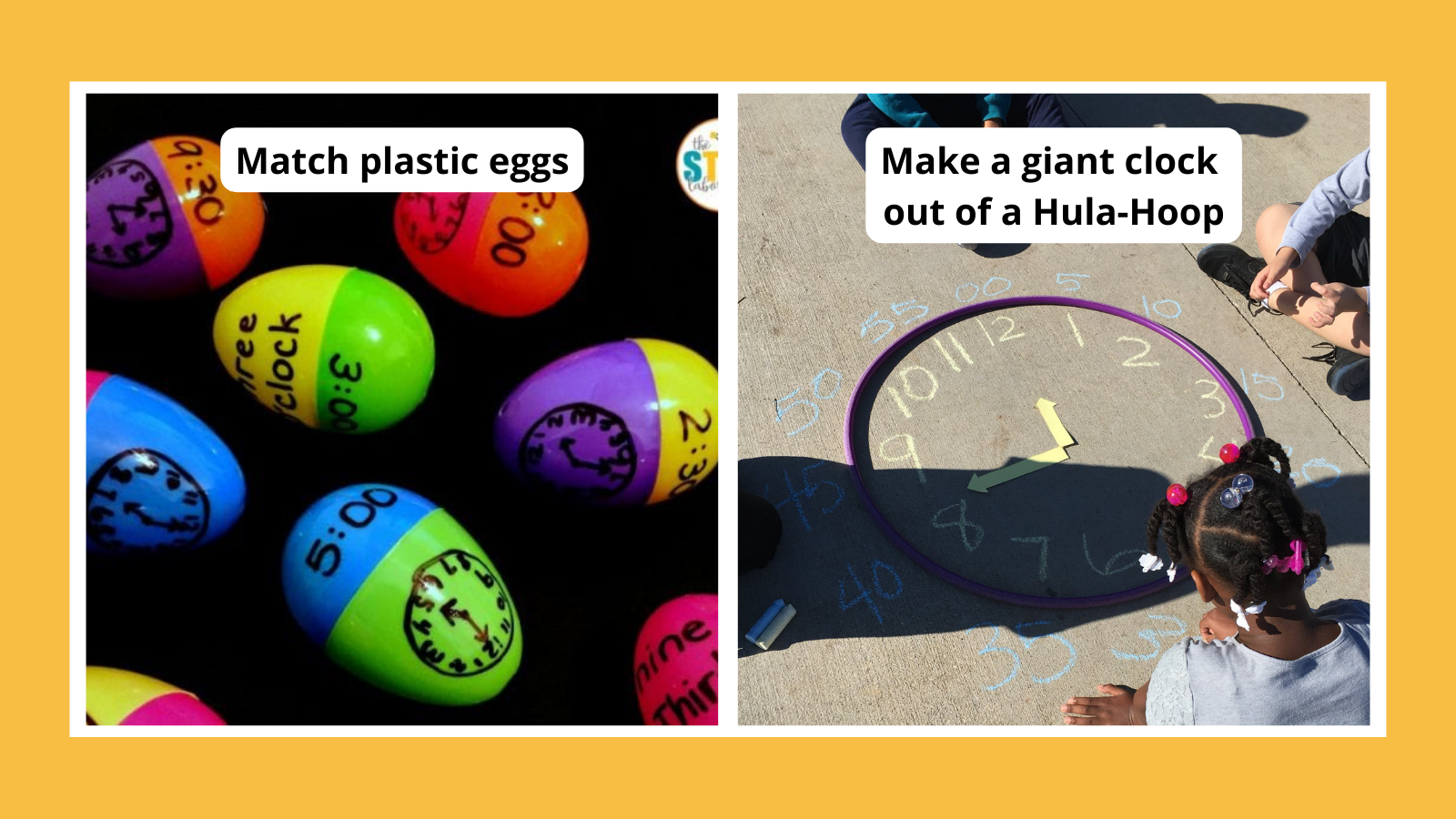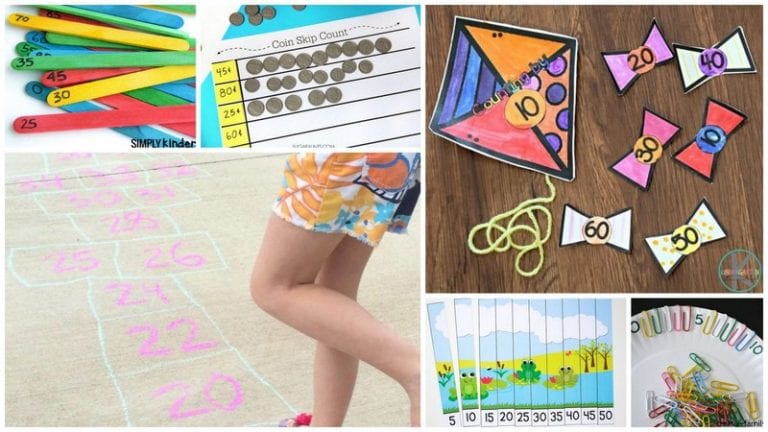Learning to tell time is an important early math lesson since it’s a real-world skill that’s used every day by everyone. Learning about minutes and hours can become tedious fast, so you’ll want to have a lot of creative and hands-on ways to bring it to life for kids. Regardless of whether you get crafty with a paper watch or active with musical clocks, we think your students will be sure to have a good time learning all things time. There are, of course, old standbys on our list too like books and worksheets. Kids can even get in some extra practice with a free online game or two. Check out our personal favorite telling-time games to try with the kiddos in your life.
Jump to:
Hands-On Activities for Telling Time
Hands-On Activities for Telling Time

1. Make a paper clock
One of the trickier aspects of telling time is understanding how the number 1 also means 5 minutes, the number 2 means 10 minutes, and so on. This paper clock activity helps students make that connection. (Pro tip: Use paper plates to make this craft even easier.)
Get tutorial: How to Make a Clock to Teach Time
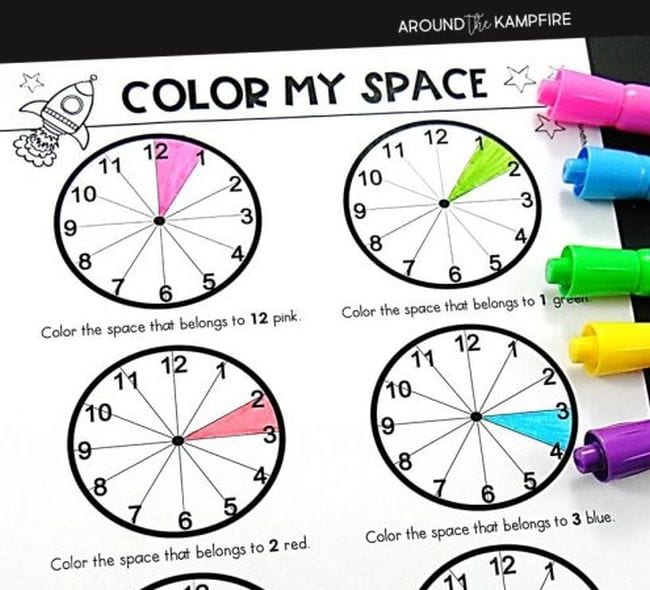
2. Color the spaces to learn the hours
Another important concept kids need to grasp is how the spaces between the numbers work on an analog clock. These coloring games are a simple way to teach kids about telling time, but it helps drive the point home. Grab the free printable at the link.
Learn more: Teaching Kids to Tell Time Past the Hour

3. Put a puzzle together
Use these telling-time puzzle games to demonstrate different ways of showing the same time. We especially love this version.
Learn more: How To Teach Telling Time in Second Grade

4. Wear paper watches
First, print and cut out the free printable paper watches available at the link below. Draw hands on each clock face and record what time each student’s watch reads on a master record sheet. Have kids decorate their watch bands, then fasten them on their wrists and add the clock faces. Give each student a record sheet, then let them go around the room and ask each of their classmates, “What time is it?” They look at their classmate’s watch and record the time. Check their results against your master.
Get tutorial: Paper Watch Craft for Kids

5. Make a clock with linking math cubes
This telling-time game helps kids understand time both as a circular analog clock and a time line moving forward. Gather your math cubes and visit the link to see how it works.
Learn more: Telling Time Is Easy Peasy
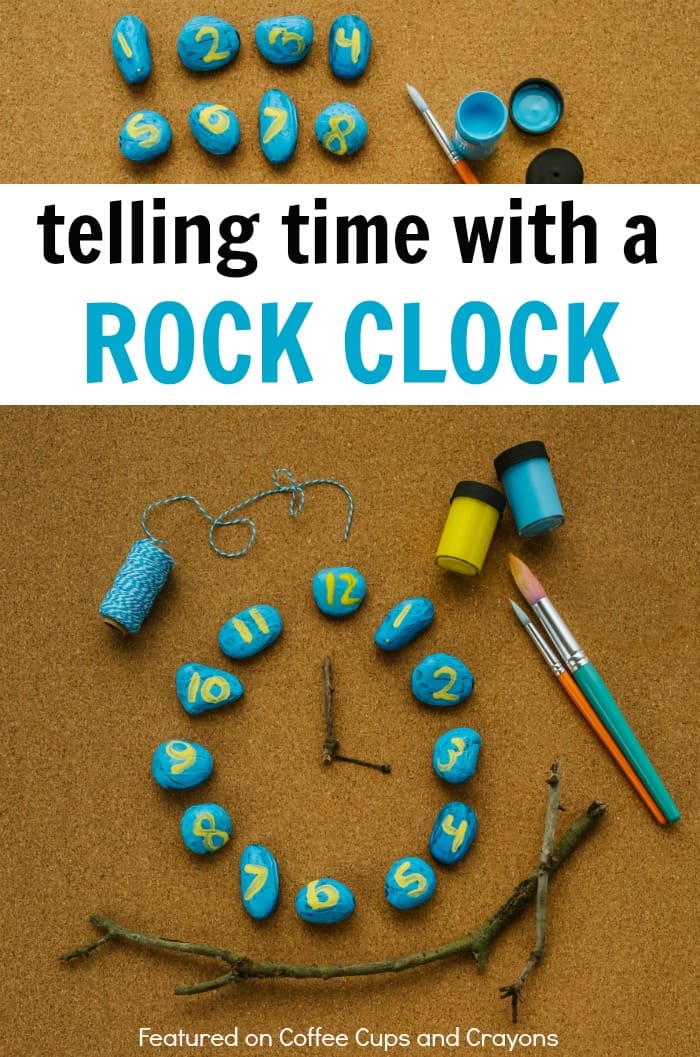
6. Make a rock clock
Part art lesson, part math, and part science, this is the ultimate time-telling activity. First, get outside to collect the sticks and rocks. Second, have kids paint their rocks with acrylic paint. Finally, have them set their “clocks” to different times.
Get tutorial: Teach Kids How To Tell Time

7. Take it outside with a Hula-Hoop clock
Pull out the sidewalk chalk and head outside for some time-telling practice. Hula-Hoops make perfect analog clocks, but if you don’t have any, you can still let kids play fun time-telling games by simply drawing circles instead.
Learn more: Hula-Hoop and Chalk Clocks

8. Set the time with play dough
Create time-telling activity mats by printing a page similar to the one shown here and then placing it in a plastic sleeve or laminating it. Finally, challenge your students to roll out play dough to create the hands of the clock and “set” it to the designated time.
Learn more: Telling Time—Clock Play Dough Mats

9. Dance around for musical clocks
If your students love games like musical chairs, you can make it an educational time-telling activity. Start by printing out our free blank clock sheets. Pass them out and have each student draw a time on their clock, then leave it on their desk. Give each student a recording sheet (included with the clock printable), then have them grab a pencil and get ready to move! Start the music and let kids dance around from desk to desk. Stop the music and instruct them to record the name and time on the clock of the desk in front of them. Start the music again and keep on going!

10. Turn a paper plate into a clock
We love how simple this project is to re-create since all you really need are some paper plates, markers, and a metal fastener. The numbers on the outer edge help your students make the connection between the minute hand and the spoken or digital time.
Get tutorial: Make a Paper Plate Clock

11. Shake up a carton of clocks
This awesome time-telling game also gives kids some practice at creating bar graphs. First, paste analog clock faces showing various times into the bottoms of an empty egg carton, and add a marble or other small toy. Kids shake up the carton, look to see what time the marble landed on, and graph their results.
Get tutorial: Time Activities for First Grade

12. Add a hook to the hour hand
This time-telling trick will help your students remember that as the hour and minute hands move around, the hour still belongs to the number behind. Clever!
Learn more: Teaching Kids To Tell Time Past the Hour

13. Write the room with I Spy Time
Post paper analog clocks with times filled in around the room. Students find each clock and record the time on their record sheet. For more of a challenge, write “What will the time be in ____ minutes?” underneath each clock. After students record the time showing, they calculate the future time too. Your students will have fun learning to tell time with these games.

14. Match up plastic eggs
Plastic eggs have so many uses in the classroom. For time-telling practice, make them into games. Just draw analog clocks on one half and write times (in words or digital time) on the other, then have kids match them up.
Learn more: Telling Time Match Up

15. Turn your classroom clock into a flower
Turn a classroom wall clock into a pretty flower that will help your students make better sense of what they are looking at. We especially love the cute way the stem reinforces which is the hour and which is the minute hand.
Get tutorial: The Best Ideas for Kids

16. Chill out with frosty clocks
Turn a snowman face into an analog clock. Use these free printables for a variety of wintry time-telling activities.
Learn more: Free Snowman Telling Time Activity

17. Calculate the duration of your favorite activities
Ready to tackle elapsed time? Have students use this free printable worksheet to record the time they spend on three different activities, at home or at school. Think: basketball practice, dance class, watching their favorite TV show, eating a banana—or doing their homework.

18. Compete to win Telling-Time Bingo
Bingo games are always a blast in the classroom, and there’s a variation you can play that’s focused on telling time. These analog clock bingo cards are customizable, so you can set them to match whatever time skills your students are working on, whether it’s hours, half hours, quarter hours, or to the minute.
Learn more: Telling Time Bingo Cards Maker

19. Race to beat the Rush Hour clock
Use toy clocks and a die to see who can reach a goal time first. Start at 12:00 and choose the target time. Students roll the die and move their clocks ahead the specified number of minutes on each turn. Students love these time-telling games!
Learn more: Rush Hour Games
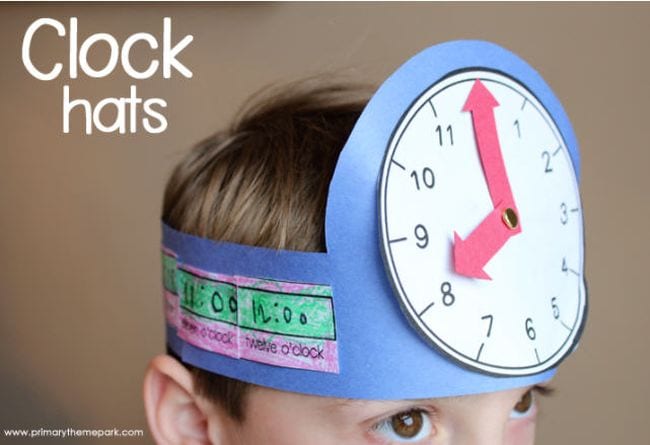
20. Don clock headbands
These clock headbands are fun to wear, and they’re also perfect for a game of “What Time Am I?” Kids ask each other questions to try to guess what time is showing on their forehead clock.
Learn more: Time Activities for First Grade
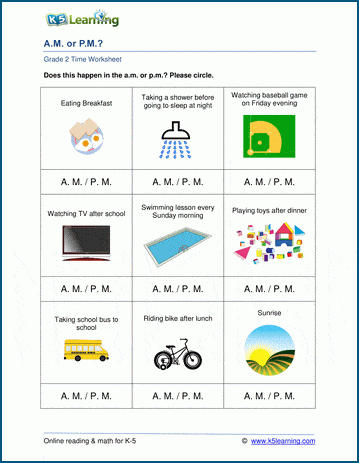
21. Distinguish between a.m. and p.m.
This free printable is perfect for teaching the difference between a.m. and p.m. Students will relate to the activities on the worksheet and therefore connect the dots between what time of day they would typically do them.
Learn more: Telling Time: AM and PM
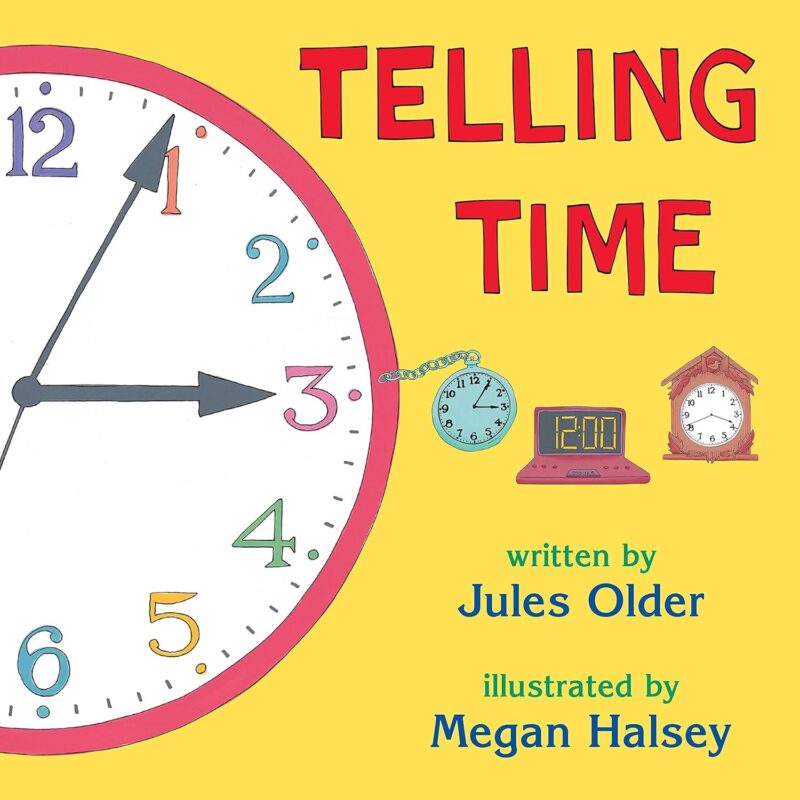
22. Read books about telling time
Books are a great way to teach about so many different topics, and telling time is certainly no exception! Pick a few of your favorites and read them aloud during story time.
Buy it: Telling Time by Jules Older
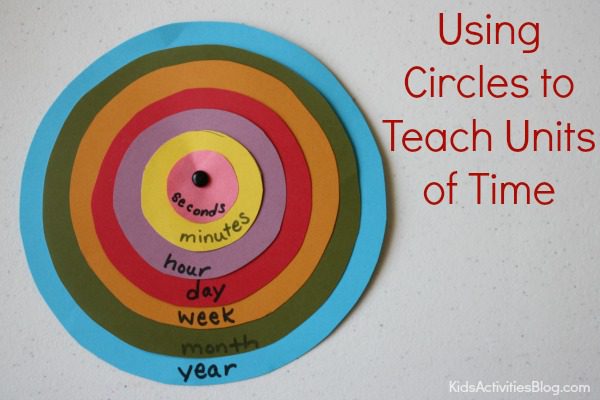
23. Teach units of time with concentric circles
We love this activity since telling time is much more than just minute and hour hands on a clock. The visual representation of the smallest unit to the largest unit (and the different colors) will help students make sense of the various units of time.
Get tutorial: Tell Time: Learning Units of Time With Concentric Circles (Printable)
Online Time Telling Games
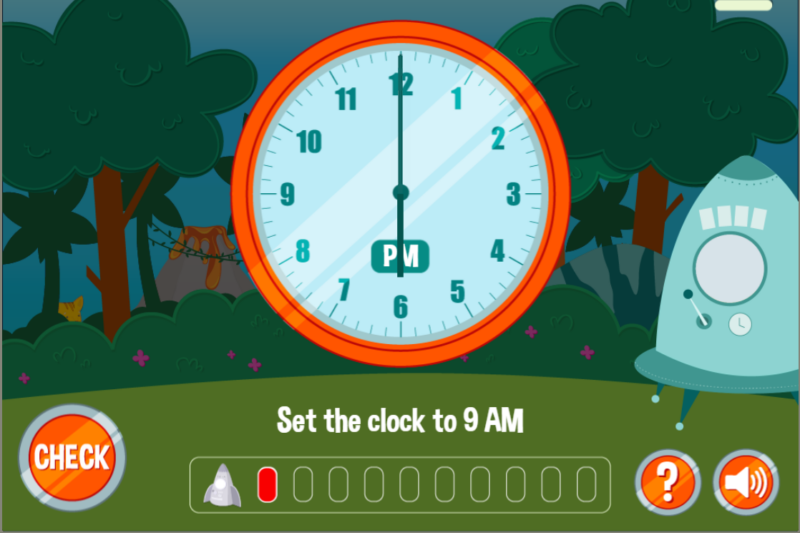
24. Travel through time
ABCya has a lot of free online games for young kids that you can play even without a subscription. This fun time-travel game allows kids to choose whether they want to practice setting a digital or an analog clock. We especially love the time-traveling theme and the cute cartoon graphics that make this activity extra kid-friendly.
Learn more: Time Travel Game

25. Pick the right answer
This simple and free game doesn’t even require a sign-up to begin playing. We love that kids are given multiple choice options to select from when guessing the time displayed on the analog clock. Kids receive 10 points for every correct answer given and are deducted 10 points for incorrect ones. We think kids will have fun trying to beat their high scores!
Learn more: Telling Time

26. Tell time to the quarter hour
This site has a lot of different online time-telling activities across different difficulty levels. We are especially fond of the one that requires students to tell time to the quarter of an hour. Kids are presented with four different analog clock faces and asked to select which one displays the time at the bottom.
Learn more: Clockworks Practice
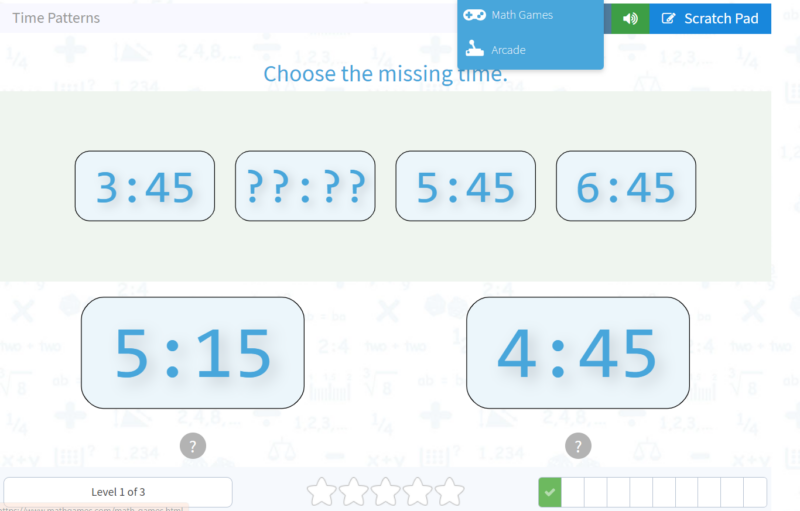
27. Recognize patterns
We love that this game combines learning time with pattern recognition. This website has additional time-telling games should the kids in your life master this one!
Learn more: Time Patterns

28. Personalize the learning experience
This free online game offers up a lot of room for personalization. You can select whether to identify time to the nearest hour, half hour, quarter of an hour, or even minute. You can also select a 12-hour or 24-hour clock. Depending on your child’s skill level, you can also select to play in timed or untimed modes. The adorable circus theme and bear ringmaster will keep any kid entertained!
Learn more: Telling the Time

29. Practice with elapsed time
Telling-time games that go beyond just identifying a time on a clock are some of our favorites for older kids. This one requires kids to identify the time on an analog clock and then decipher what time it will be in a certain number of hours.
Learn more: Time Teller

30. Compare digital and analog
This site begins by explaining the differences between digital and analog clocks as well as how to read each one. It then takes you through various exercises to test your understanding.
Learn more: Telling the Time: Digital and Analog
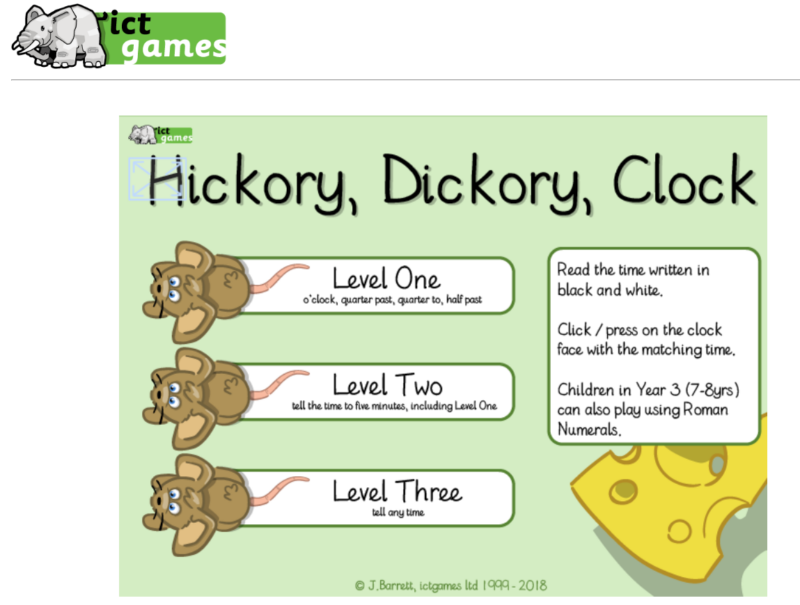
31. Make the mouse run up the clock
This is such a fun spin on identifying the time on a clock. We love the play on a classic nursery rhyme and the oh-so adorable mouse and cat graphics. Guess the right time on the cartoon grandfather clock and a cute mouse will run up it. But get it wrong and an angry cat will make itself known!
Learn more: Hickory, Dickory, Clock
32. Take a quiz
This video is advertised as being for English language learners, but it would work equally well for kids just learning to read clocks. Kids can just watch it or they can keep some scrap paper handy to record their answers.
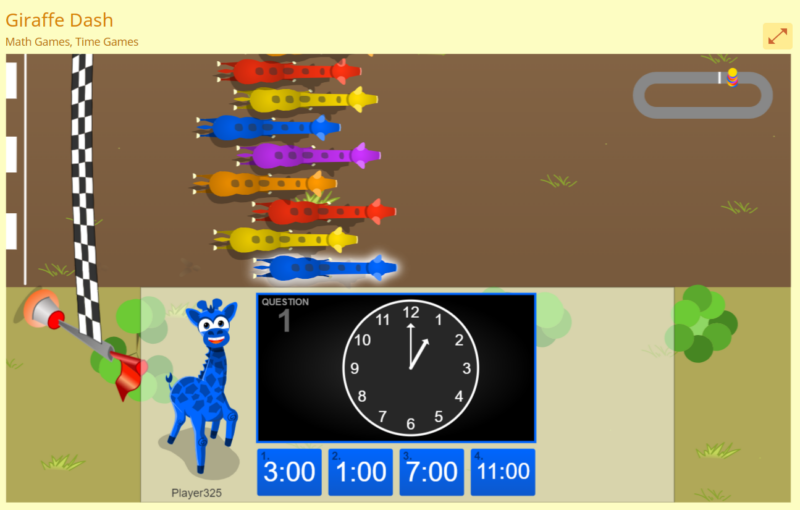
33. Race to the correct time
What’s more fun than playing a game with friends? We love that multiple players can play against one another as their adorable giraffe avatars race to be the first one across the finish line.
Learn more: Giraffe Dash
How do you teach telling time? Come exchange ideas in the We Are Teachers HELPLINE group on Facebook.
Plus, check out Creative Ways To Dress Up Your Classroom Clock!

